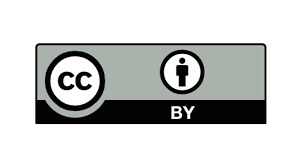Comparison of abrasive wear and sliding wear of AiSi/SAE 1020, 1045 and 4140 steels
Comparación del desgaste por abrasión y el desgaste por deslizamiento de los aceros aisi/sae 1020, 1045 y 4140
Main Article Content
Two ways of evaluating the resistance to the wear, these are analyzed from the quantitative and qualitative point of view. Wear tests were realized by graze and wear by slide according to the procedure ASTM G65 and G99, in the steels AISI/SAE 1020, 1045 and 4140. The factors of study are the load, the speed of slide and the slid distance; all the factors were combined to determine the behavior of every wear. The loss of material is compared by the model Archard. The results of the tests show that the behavior of the desgate of the steels they are proportional to the factors of load and slid distance. The spoiled surfaces show typical characteristics of both types of wear, showing a relation with the experimental factors.
Downloads
Article Details
Bayer, Raymond George. Engineering design for wear. 2004.
Lim, M. F. Ashby and S. C.Lim. WEAR-MECHANISM MAPS. Scripta METALLURGICA et MATERIALIA, Vol. 24, págs. 805-810. 1990.
Archard, J.F. Contact and Rubbing of flat surfaces., journal of applied physics. 1953.
Hegadekatte, V.S y Kurzenha, N. huber. A predictive modeling scheme for wear in tribometers . Tribology. 2008.
Sarkar, A.D. Desgaste de Metales. Mexico : s.n., 1990.
ASM. ASM Handbook. 1998. doi: 10.31399/asm.hb.mhde2.9781627081993
Ashby, Michael y Lim, S.C. Wear - mechanism maps. Wear. 1990.
Nilsson, R, Svahnb, F y Olofsson, U. Relating contact conditions to abrasive wear. Wear.2006.
Grigoroudis, K. Modelling low stress wea. Wear.1997.
Ashby, Michael. the wear of sliding conditions on theory friction of metals. Wear.1988.
Ashby, Michael. Wear - rate transitions and their relationship to wear mechanism. wear.1986.
Rabinowicz. friction and wear of materials. s.l.: john wiley , 1965.
Rabinowicz, E. Journal of applied physics.1951.
Pirso, Juri. Friction and dry sliding wear. 2003.







